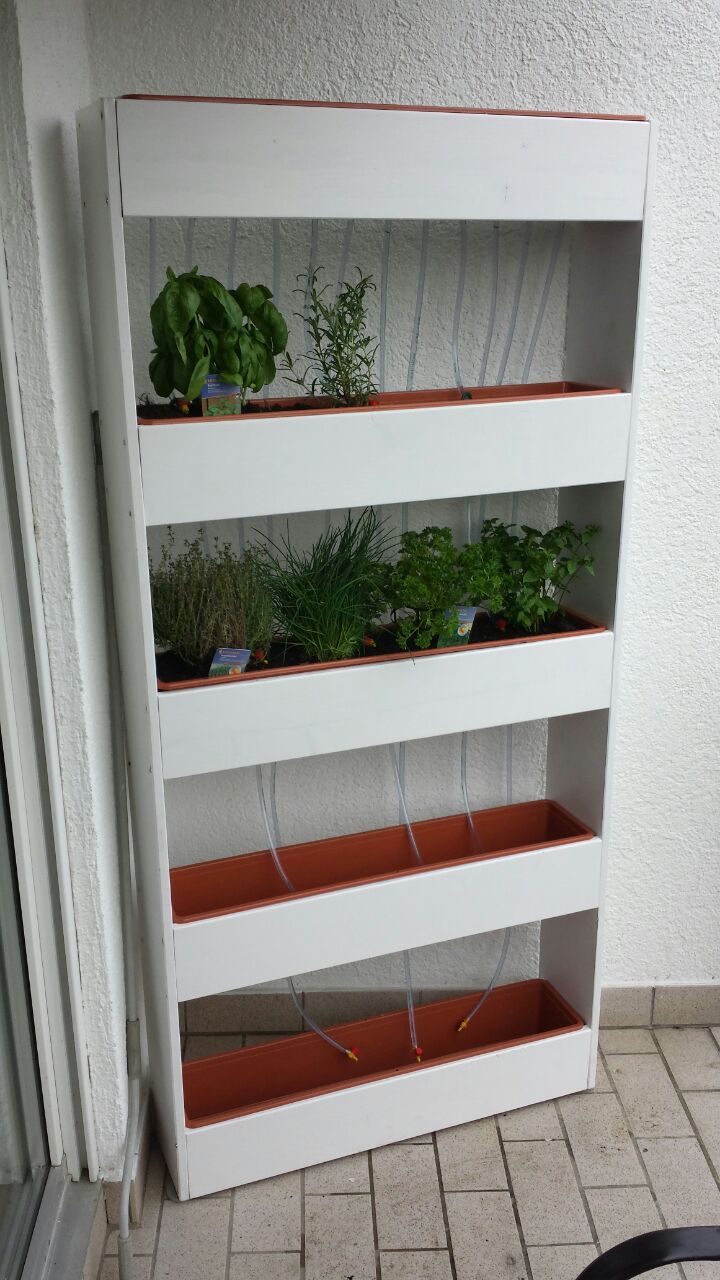Project:Plant Watering
As many others, Martin is quite lazy. Unfortunately, he also likes to have fresh herbs and other plants on his balcony.
Since this combination led to many dead plants, it was pretty clear that there needs to be some automated solution for this.
Vertical Farming
On a normal balcony, space is a very limited resource. Therefore, a solution was needed which allows to make use of vertical space rather than using up a lot of horizontal space.
In addition, it should be possible to build it from standard components which you can get from your local hardware store.
Using jardinieres which are arrenged on top of each other with a self-built rack was the perfect solution for this.
In my case, I am using 4 jardinieres to grow plants in and a 5th one on top which is just being used to store water:

Supplying Water
In a first tests of the system, I thought using water pumps would be a good idea. Therefore, I got these 12V pumps and tested them. While they worked, they were pretty loud, so there would need to be logic which prevents the system from watering during night hours. Therefore, a more silent system was needed.
When thinking of how to achieve this, the idea of vertical farming came up, which allows the water storage to be the highest point of the system. With this, I can just use valves and let gravity do the work (isn´t gravity awesome?). I found some random 12V magnetic valves in the internet which I got for my system. Unfortunately, I cannot find them anymore.
Soil Moisture Sensor
In order to control the whole system, sensors are needed which are able to measure the soil moisture in a reliable way. If you want to measure soil moisture, there are in general two ways:
Resistive Measurement
Resistive measurement of soil moisture is a very easy thing. In principle, you put two electrodes into the soil, put power on one of them and measure how much power arrives at the second one.
With this, you have a very basic measurement of the soils resistance. The more power arrives at the second electrode (and thus the lower resistance), the more water is in the soil.
There are very cheap sensors which can measure the moisture this way.
The "controller" board they come with is capable of either providing the analogue value or provide a digital value which indicates the moisture to be above/below a certain threshold (adjustable by a potentiometer).
While these sensors provide you with correct values, they have a big disadvantage which is unfortunately in their underlying priciple: The electrodes need have direct contact to the soil.